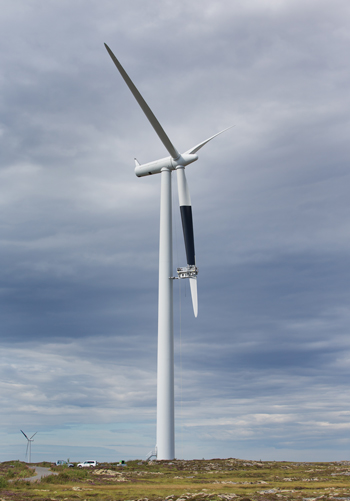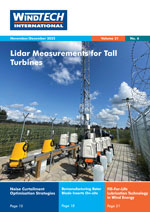 American Laboratory Tests, Experiments in Norway and Possible Large-Scale Demonstration
American Laboratory Tests, Experiments in Norway and Possible Large-Scale DemonstrationAn American research report led to the elimination of eagle deaths on the Norwegian island of Smøla. A review demonstrates that with today’s larger wind turbines, three black turbine blades per wind turbine can give at least as good results as the Norwegian experiment with one black blade. Given the importance of the appearance of the landscape to those viewing it, the former option is preferable.
By Staffan Engström, Managing Director, Ägir Konsult, Sweden










